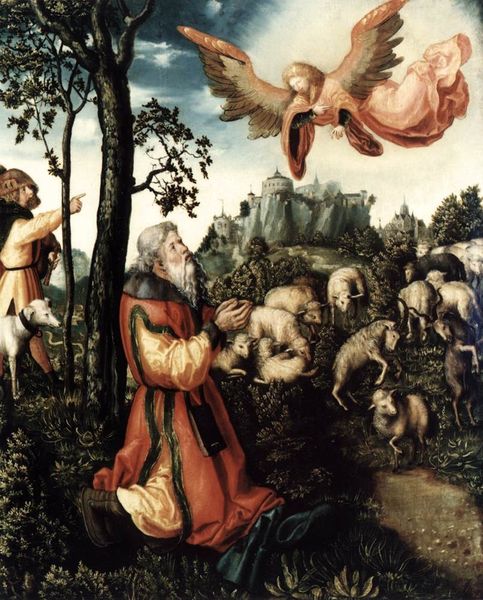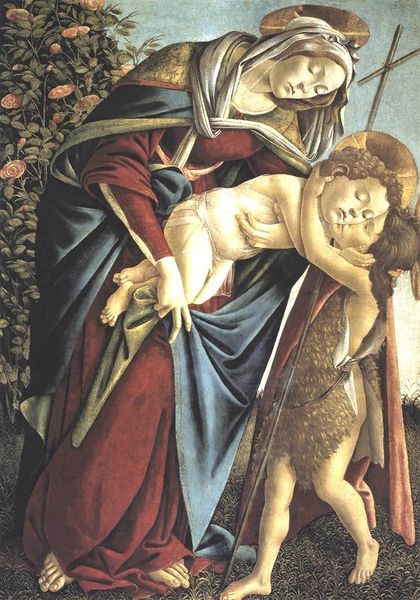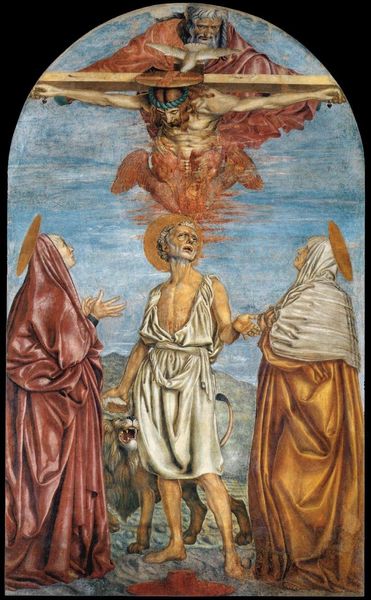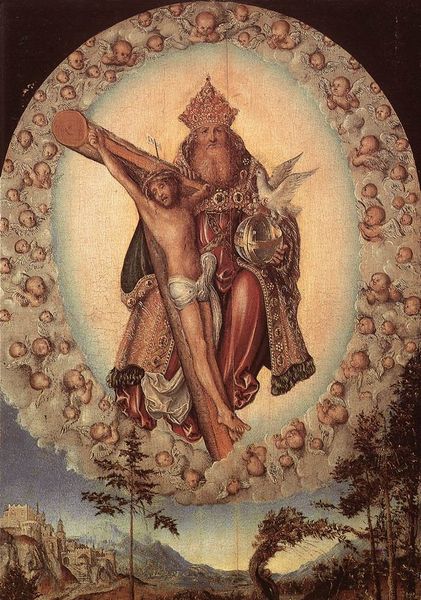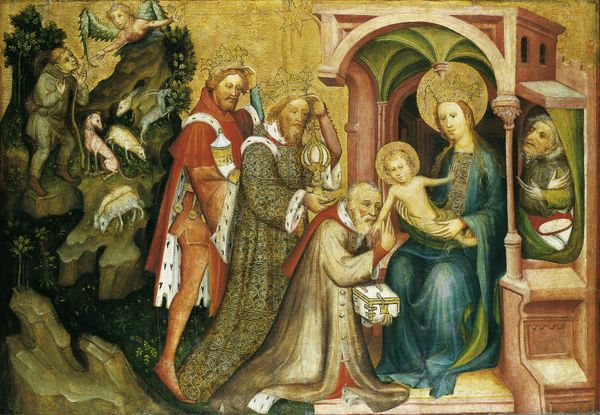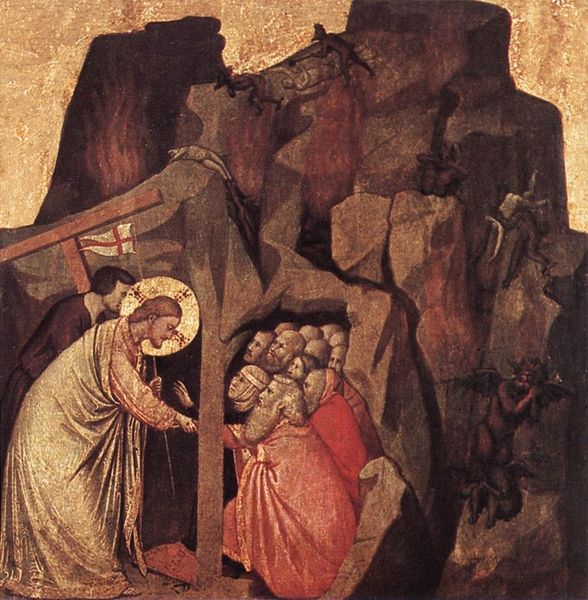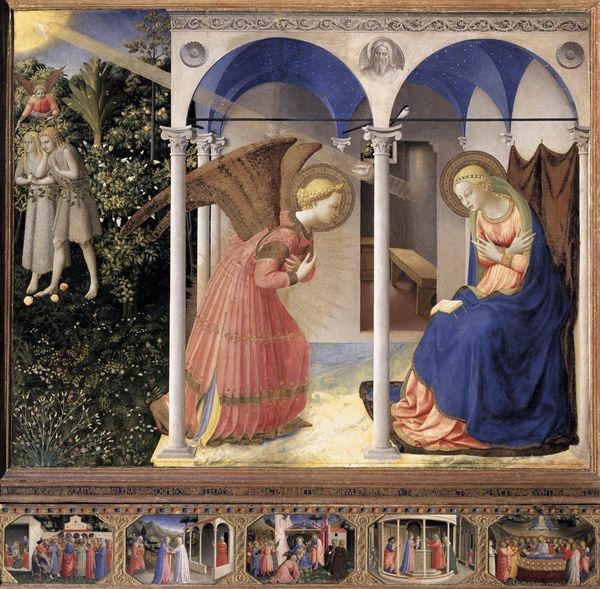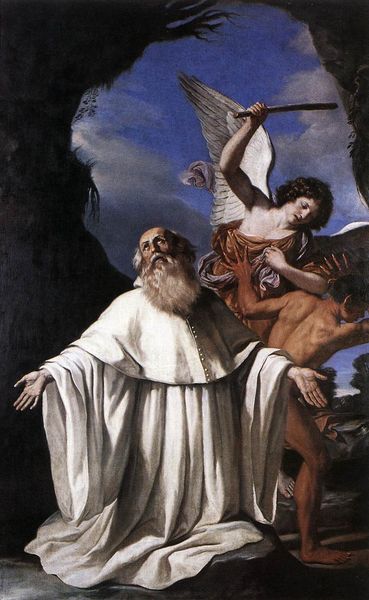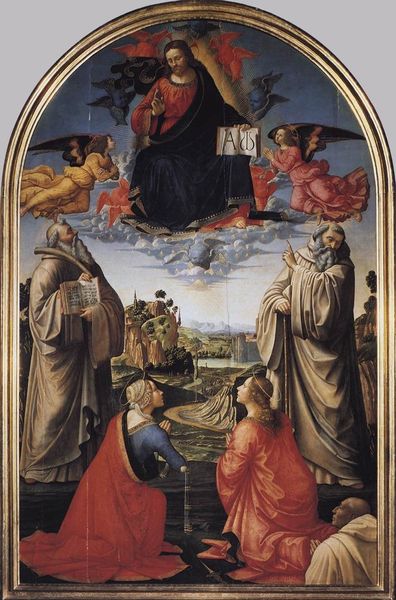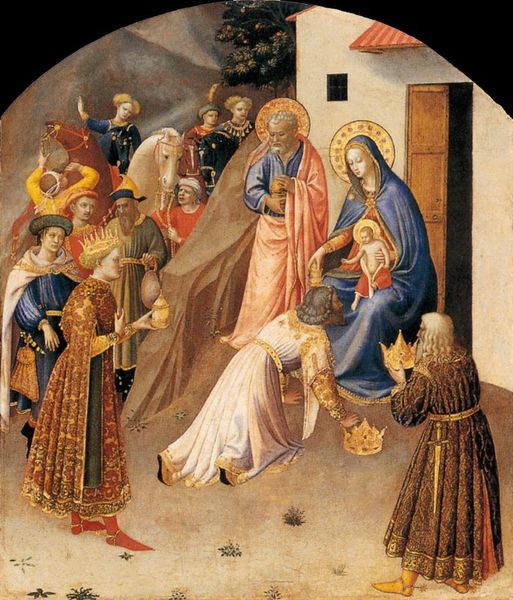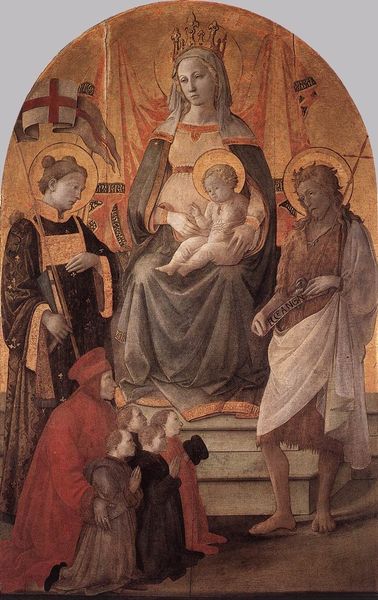
Apparition of the Virgin to Sts Anthony Abbot and George 1445
0:00
0:00
tempera, painting, oil-paint
#
tempera
#
painting
#
oil-paint
#
landscape
#
figuration
#
oil painting
#
history-painting
#
italian-renaissance
Copyright: Public domain
Curator: Pisanello's “Apparition of the Virgin to Sts Anthony Abbot and George,” created around 1445, invites us into a complex tapestry of the sacred and the chivalric. Editor: It’s quite striking, isn't it? The light immediately draws your eye – that swirling gold radiance surrounding the Virgin and Child clashes delightfully with the somewhat grimy texture of the saints and the dragon. It's this almost brutal earthiness that makes it so fascinating. Curator: Yes, and consider the layered symbolism at play. We see Saint Anthony Abbot, recognizable by his staff and bell, confronting Saint George in shining armor. The Virgin appears above, embodying divine grace. This meeting suggests a convergence of monastic piety and earthly knighthood. Notice also the vanquished dragon, which adds a classic twist to the visual dynamic of good versus evil. Editor: Absolutely. And what interests me here are the very practical, earthly materials. Tempera and oil paint allowed Pisanello to render textures – the worn cloak of Anthony, the glint of George’s armor – with impressive accuracy. I'm drawn to considering how these were sourced, ground, mixed; by whose hands. It shifts the focus away from a purely symbolic reading, and brings us closer to the labour involved in creating this artifact. Curator: The artist uses these materials with clear intentions: The iconography subtly implies the importance of penitence and faith embodied by the hermits and saints over the glorious chivalry embodied by the shining figure of St. George, as both ultimately acknowledge devotion. It's fascinating how this painter uses cultural narratives to deliver more personal, even spiritual meaning. Editor: Yet, consider how even these materials can symbolize social standing and class. The very cost and craftmanship of creating this image, I believe, reinforces the Church and Patron's dominion in Italian society at this point in history. The Virgin as she’s painted in light may remind of something miraculous and beautiful, but the economic foundations underpinning its creation reflect something darker. Curator: That's a very pertinent point. Ultimately, Pisanello's "Apparition" exists as both a work of deep cultural symbolism, reflecting medieval beliefs about morality, but at the same time, it remains a beautiful physical product created out of earthly, physical and cultural materials. Editor: Indeed, it leaves us pondering the convergence of earthly realities and lofty aspirations in one unforgettable painted encounter.
Comments
No comments
Be the first to comment and join the conversation on the ultimate creative platform.

